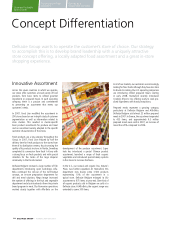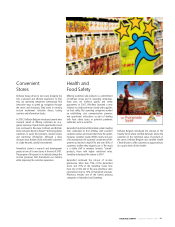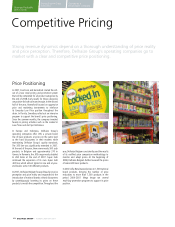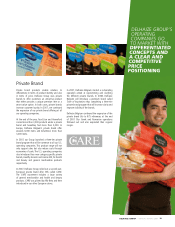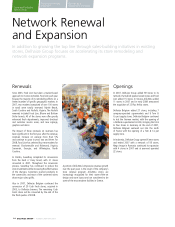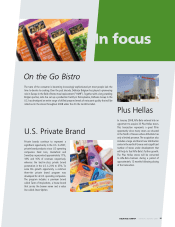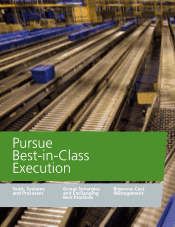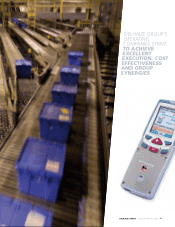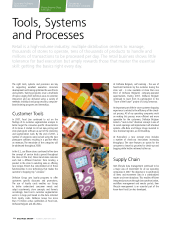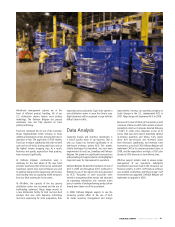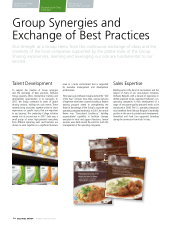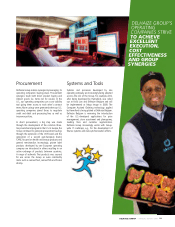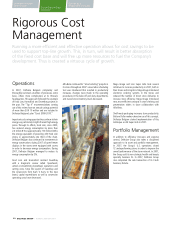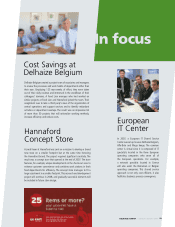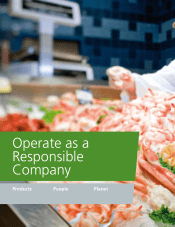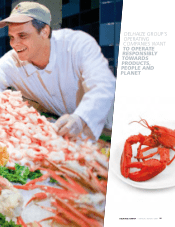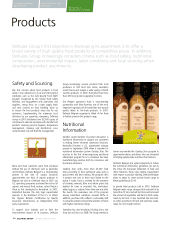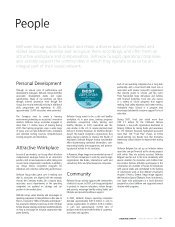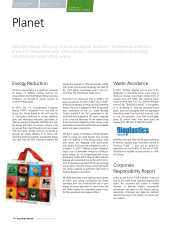Food Lion 2007 Annual Report Download - page 20
Download and view the complete annual report
Please find page 20 of the 2007 Food Lion annual report below. You can navigate through the pages in the report by either clicking on the pages listed below, or by using the keyword search tool below to find specific information within the annual report.
Retail is a high-volume industry: multiple distribution centers to manage,
thousands of stores to operate, tens of thousands of products to handle and
millions of transactions to be processed per day. The retail business shows little
tolerance for bad execution but amply rewards those that master the essential
skill: getting the basics right every day.
Tools, Systems
and Processes
The right tools, systems and processes are key
to supporting excellent execution. Associate
development and training optimizes the use of tools
and systems. Training programs cover a multitude
of topics ranging from technical areas to customer
interaction and are delivered using a variety of
methods: individual and group sessions, computer-
based training programs and internships.
Customer Tools
In 2007, Food Lion continued to act on the
fi ndings of its customer segmentation analysis to
better target the consumer-specifi c characteristics
of its stores. It started to roll out new pricing and
store planogram software as part of the clustering
and segmentation work. By the end of 2007, a
number of categories were revised using the new
planogram software, resulting in a positive effect
on revenues. The remainder of the categories will
be addressed throughout 2008.
In the U.S., our Bloom stores continued to fi ne-tune
the concept of service kiosks spread throughout
the store. At the start, these stand-alone consoles
each had a different function: from locating a
product in the store to selecting wine or offering
new recipes. Bloom has consolidated all of these
functionalities in one technology that makes the
customer’s shopping trip “a breeze.”
Delhaize Group uses loyalty programs to offer
customers specifi c discounts and promotions.
The use of loyalty cards enables our Group
to better understand consumer needs and
adapt assortments, store concepts and formats
accordingly. Food Lion’s customer segmentation
work is in large part based on the data collected
from loyalty cards. Delhaize Group has more
than 15 million active cardholders at Food Lion,
Delhaize Belgium and Alfa-Beta.
At Delhaize Belgium,
self-scanning
- the use of
hand-held terminals by the customer during the
store visit - is now available at more than one
third of Delhaize Belgium’s company-operated
supermarkets. During 2007, Delhaize Belgium
continued to learn from its participation in the
“Store of the Future” project of Living Tomorrow.
An important part of the in-store customer shopping
experience is related to the effi ciency of the check-
out process. All of our operating companies work
on making this process more effi cient and more
agreeable for the customers. Delhaize Belgium
tested a “next-in-line” checkout concept in one of
its recent openings and implemented
self-checkout
systems. Alfa-Beta and Mega Image invested in
new checkout registers, as did Sweetbay.
At Hannaford, a new concept store includes
a number of check-out innovations increasing
throughput. The store features an option for the
consumer to leave his groceries for check-out and
bagging while he/she retrieves his/her car.
Supply Chain
Item lifecycle data management continued to be
a major area of investment for all our operating
companies in 2007. The objective is to synchronize
all items and movement data in a standardized
master and event database. This enables effi cient
integrated processes through data synchronization,
workfl ow management and vendor portals. Item
lifecycle management is an essential part of the
know-how Food Lion has developed.
Generate Profi table
Sales Growth Pursue Best-in-Class
Execution
Operate as a
Responsible Company
DELHAIZE GROUP / ANNUAL REPORT 2007
18




